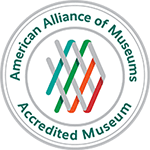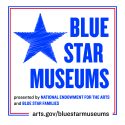Robert Youngman’s sculpture, Cedarhurst One, was the very first outdoor sculpture to be commissioned and installed by the Mitchell Foundation. It was done to celebrate the museum’s tenth anniversary in 1983. Well before the sculpture park began formally in 1993 with the NEA’s Jane Alexander dedication.


Youngman, Cedarhurst One, 1983, Goldman-Kuenz Sculpture Park, Mt. Vernon, IL Photos courtesy of Cedarhurst
Robert Youngman was born in 1927 in Murphysboro, Illinois. In 1969, Youngman began teaching art at the University of Illinois Urbana-Champaign where he taught for over 15 years. Youngman died in 2010. The following are excerpts from a Youngman talk at U of I School of Architecture, March 22, 1984.
“Realizing, from today’s perspective, how ridiculous this may sound, I can still clearly say that I knew what it was like to work with my hands—to build things—to repair—to improvise—to have a respect for materials and processes—to “set tires” for farmers’ wagons, to swing a sledge—to have calloused hands—to cut threads—to sharpen plow shares—to repair mole boards—to use a draw shave (we called it a “draw knife”)—to see an ordinary blue-colored shirt turn dark blue black from work sweat—to hear the ring of his hammer on the anvil.
It is difficult to believe, I know, but I was taught to gas-and electric-weld when I was 7 and 8 years old.
I experienced all of this very early in my life, for I was born next door to my father’s blacksmith shop—not in a hospital, but in my grandmother’s bedroom.
From 12 years on, the St. Louis City Art Museum was my “holy of holies”.
Concrete was a new experience for me—it fact, even now (23 years later) it is still new.

Centennial, Campus of University of Illinois Urbana-Champaign photo courtesy of ExploreCU
Even with today’s economy, many new opportunities exist for integration of the arts into the revitalization of our cities. For example, I am vitally interested in participatory, computer-driven fountains sensitive to the pulse and movements of people.
And there is another direction I call “Habitable Sculpture”—that is, sculpture forms or masses large enough in which people can live and function.


These four, Comerica Building, Detroit, MI, 1970, and details, photos courtesy of Midwest Modern


Why, then, after becoming a professional sculptor (1967-69), did I return to academia? Perhaps it was because this is where broad systems of ideas can best be conceived, and simple, pristine, clear views of the world can be experienced. These two nourishments of the mind, one of the intellect, the other close to the heart, at times mingle and fuse and bring forth innovation.”

Robert Youngman, Engineering Fountain, on the main campus of Purdue University, West Lafayette, Indiana, Photo by Amerique, courtesy of commons.wikimedia.org





